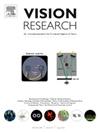Scleral ultrastructure in young rhesus monkeys: A stereological approach
IF 1.4
4区 心理学
Q4 NEUROSCIENCES
引用次数: 0
Abstract
The sclera provides mechanical support to the globe and plays a key role in maintenance of ocular structural integrity. Evidence shows that scleral remodeling contributes to biomechanical weakening, increasing the risk of pathologies, such as glaucoma and posterior staphyloma in high myopia. A precise characterization of normal regional ultrastructure is needed for a better understanding of scleral remodeling. The purpose of this study was to develop and implement a stereological analysis method to characterize scleral ultrastructure in healthy young rhesus monkey eyes. Monkeys (N = 4 eyes) first underwent normal emmetropization in a primate nursery. At 150 days of age, scleral tissue was collected in 1 mm2 sections from three regions, equatorial nasal, posterior, and equatorial temporal, and processed for transmission electron microscopy (TEM). Images were captured at three depths: outer, middle, and inner, for all regions. Scleral thickness, fibroblast volume fraction, volume fraction of fibrillin microfibrils, and collagen fibril diameters were quantified using stereology and manual segmentation. The sclera was thickest in the posterior region with a mean thickness of 217.1 ± 10.1 μm. A total of 103 micrographs were analyzed to compute the volume fraction of fibroblasts and fibrillin microfibrils. Median fibroblast volume fraction was 7.4 %, and fibrillin microfibril volume fraction was 1.8 %. A total of 3564 collagen fibrils, encompassing 99 fibrils per region and depth per eye, were analyzed. Median collagen fibril diameter was 79.8 nm and ranged from 23 nm to 205 nm. This stereological approach provides a foundation for future studies investigating myopic scleral remodeling, where axial elongation and scleral thinning are known to show regional differences.
年轻恒河猴巩膜超微结构:立体学方法
巩膜为眼球提供机械支撑,在维持眼结构完整性方面起着关键作用。有证据表明,巩膜重塑会导致生物力学减弱,增加高度近视患者青光眼和后葡萄肿等病变的风险。为了更好地了解巩膜重塑,需要对正常区域超微结构进行精确的表征。本研究的目的是建立和实施一种立体分析方法来表征健康年轻恒河猴眼睛的巩膜超微结构。猴子(N = 4只眼睛)首先在灵长类动物保育室中进行了正常的正视化。在150日龄时,从赤道鼻、后部和赤道颞三个区域收集1 mm2的巩膜组织,并进行透射电子显微镜(TEM)处理。所有区域的图像在三个深度上捕获:外部、中间和内部。用立体学和人工分割法定量测定巩膜厚度、成纤维细胞体积分数、纤维蛋白微原纤维体积分数和胶原纤维直径。巩膜厚度以后巩膜最厚,平均厚度为217.1±10.1 μm。共分析103张显微照片,计算成纤维细胞和原纤维微原纤维的体积分数。成纤维细胞体积分数中位数为7.4%,纤维蛋白微纤维体积分数中位数为1.8%。共分析了3564个胶原原纤维,每个区域和每只眼睛深度包含99个原纤维。胶原原纤维直径中位数为79.8 nm,范围为23 ~ 205 nm。这种立体学方法为未来研究近视巩膜重塑提供了基础,其中轴向伸长和巩膜变薄已知表现出区域差异。
本文章由计算机程序翻译,如有差异,请以英文原文为准。
求助全文
约1分钟内获得全文
求助全文
来源期刊

Vision Research
医学-神经科学
CiteScore
3.70
自引率
16.70%
发文量
111
审稿时长
66 days
期刊介绍:
Vision Research is a journal devoted to the functional aspects of human, vertebrate and invertebrate vision and publishes experimental and observational studies, reviews, and theoretical and computational analyses. Vision Research also publishes clinical studies relevant to normal visual function and basic research relevant to visual dysfunction or its clinical investigation. Functional aspects of vision is interpreted broadly, ranging from molecular and cellular function to perception and behavior. Detailed descriptions are encouraged but enough introductory background should be included for non-specialists. Theoretical and computational papers should give a sense of order to the facts or point to new verifiable observations. Papers dealing with questions in the history of vision science should stress the development of ideas in the field.
 求助内容:
求助内容: 应助结果提醒方式:
应助结果提醒方式:


